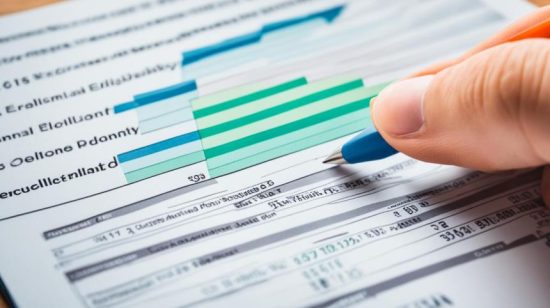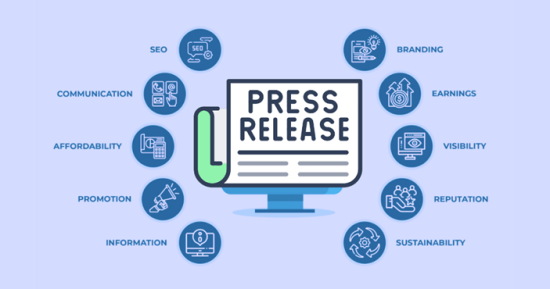
When it comes to financing your higher education, understanding the eligibility requirements for student loans is vital. Direct subsidized loans are a popular option for many students, as they offer the benefit of having the government pay the interest while you are in school and during certain other periods. However, there are limitations on how long you can receive these loans.
In general, the maximum eligibility period for direct subsidized loans is determined by the length of your program. But at what point does your eligibility expire? How long can you receive these loans before you are no longer eligible?
Imagine you’re enrolled in a 4-year bachelor’s degree program. According to the 150% rule, you can receive direct subsidized loans for up to 6 years. Similarly, if you’re pursuing a 2-year associate degree program, the maximum eligibility period is 3 years.
But what if you decide to switch programs? Does your maximum eligibility period change? And what happens to the direct subsidized loans you received for a previous program? Do they count against your new eligibility period?
All these questions will be answered in this article as we delve into the details of direct subsidized loan eligibility. We’ll explore the impact of program length, enrollment status, and changes in education programs on your eligibility. We’ll also discuss the consequences of exceeding the maximum eligibility period and the responsibilities that come with it.
Are you curious to know more at what point are you no longer eligible to receive direct subsidized loans?? Read on to find comprehensive answers and gain a better understanding of how to navigate your subsidized loan eligibility.
Understanding the Maximum Eligibility Period for Direct Subsidized Loans

When it comes to receiving direct subsidized loans, it’s important to understand the concept of the maximum eligibility period. This period refers to the length of time during which you are eligible to receive these loans. To have a clear understanding, let’s delve into the details of the maximum eligibility period, the 150% rule, the impact of program length on loan eligibility, and the consequences of changing education programs. Now all the confusions at what point are you no longer eligible to receive direct subsidized loans will be solved.
Defining the 150% Rule and Its Impact on Loan Eligibility
The 150% rule is a key factor in determining your eligibility for direct subsidized loans. According to this rule, you cannot receive these loans for more than 150% of the published length of your program. In simple terms, if you are enrolled in a 4-year bachelor’s degree program, you can receive direct subsidized loans for up to 6 years. However, if you are in a 2-year associate degree program, the maximum eligibility period is 3 years.
How Program Length Affects Access to Subsidized Loans?
The length of your program plays a significant role in your access to subsidized loans. Programs with shorter lengths generally have shorter maximum eligibility periods. For example, a certificate program that lasts for just a few months may only allow you to receive direct subsidized loans for a limited period of time. On the other hand, longer programs such as a 4-year bachelor’s degree can provide an extended maximum eligibility period.
The Consequences of Changing Education Programs
Changing education programs can have consequences for your subsidized loan eligibility. If you switch from one program to another, the direct subsidized loans you received for the previous program will count against your new maximum eligibility period. This means that if you’ve already received subsidized loans for a certain length of time in one program and then change to a new program, your new eligibility period will be reduced based on the previous loans you received.
Understanding the maximum eligibility period, the 150% rule, the impact of program length on loans, and the consequences of changing programs is essential when it comes to managing your subsidized loan eligibility. By being aware of these factors, you can make informed decisions about your educational journey and financial aid options.
Calculating Your Subsidized Loan Eligibility Based on Enrollment
Your subsidized loan eligibility is determined by your enrollment status. Whether you are enrolled part-time or full-time affects the amount of subsidized loans you can receive. Calculating your eligibility requires considering the length of your program, your enrollment status, and any changes in enrollment during the course of your studies.
When calculating your subsidized loan eligibility, it’s important to keep in mind that part-time enrollment may result in receiving a lower amount of subsidized loans compared to full-time enrollment. This is because full-time students generally have a higher cost of attendance and, therefore, may be eligible for a higher loan amount.
If you are unsure about your enrollment status and its impact on your subsidized loan eligibility, it is recommended that you consult with your financial aid office or student advisor. They can provide guidance on how to calculate your eligibility based on the specific requirements of your program and enrollment status.
Understanding your subsidized loan eligibility based on enrollment is crucial for effectively managing your finances during your education. By accurately calculating your eligibility, you can ensure that you are maximizing your access to subsidized loans while also considering any potential changes in enrollment that may occur during your studies.
Enrollment Status and Its Effect on Direct Subsidized Loan Eligibility

Your enrollment status, whether part-time or full-time, has implications for your direct subsidized loan eligibility. Understanding how your enrollment status affects your eligibility is essential for making informed decisions about your financial aid.
Part-Time vs Full-Time Enrollment Implications
When it comes to direct subsidized loans, there are differences in eligibility based on your enrollment status. Part-time enrollment may result in reduced subsidized loan amounts compared to full-time enrollment. This means that if you are enrolled part-time, you may qualify for less loan funding than someone who is enrolled full-time.
It’s important to carefully consider the implications of part-time enrollment before making a decision. While part-time enrollment may allow you to balance work or other responsibilities, it may also limit the amount of financial aid you can receive.
How Reduced Enrollment Affects Your Maximum Eligibility Period?
Reduced enrollment can also have an effect on your maximum eligibility period for receiving direct subsidized loans. The maximum eligibility period is determined by the length of your program, and it indicates the total time during which you can receive subsidized loans.
If you reduce your enrollment or take a break from your studies, your maximum eligibility period may be extended. However, it’s important to note that any direct subsidized loans you received during your previous enrollment period will still count towards this extended maximum eligibility period.
Therefore, it’s crucial to carefully plan your enrollment changes to ensure that you make the most of your subsidized loan eligibility. Be aware of the potential impact that reduced enrollment may have on your loan eligibility and take steps to manage your financial aid accordingly.
Having a clear understanding of how enrollment status can affect your direct subsidized loan eligibility is essential for making informed decisions about your education financing. By carefully considering the implications of part-time enrollment and understanding the effect of reduced enrollment on your maximum eligibility period, you can navigate the financial aspects of your education journey more effectively.
Detailed Scenarios that Lead to Loss of Subsidized Loan Eligibility

When it comes to subsidized loan eligibility, there are various scenarios that can lead to loss of eligibility. It is essential to understand these scenarios to comprehend why and when you might no longer be eligible for direct subsidized loans.
One scenario that can result in the loss of eligibility is reaching the maximum eligibility period. The maximum eligibility period for receiving direct subsidized loans is determined based on the length of your program. If you exceed this maximum period, you may no longer be eligible for further subsidized loans.
Another factor that can affect subsidized loan eligibility is changes in enrollment status. Whether you switch from full-time to part-time enrollment or vice versa, it can impact your eligibility. Different enrollment statuses have distinct implications for the amount of subsidized loans you can receive.
There may also be other factors that can lead to the loss of subsidized loan eligibility. These factors could include changes in financial circumstances, academic performance, or changes in federal guidelines. It is crucial to stay informed about any updates that may affect your eligibility status.
By being aware of the scenarios that can lead to loss of subsidized loan eligibility, you can plan and manage your educational finances more effectively. Remember to stay updated on any changes in guidelines or regulations that may have an impact on your eligibility status.
Navigating Interest Payment Responsibilities After Maximum Eligibility
After reaching your maximum eligibility period for direct subsidized loans, you may be responsible for paying the accrued interest on your loans. It is essential to understand your interest payment responsibilities to effectively manage your post-eligibility financial obligations.
Responsibility for Interest During Various Enrollment Changes
The responsibility for interest payment can change based on various enrollment changes. For instance, if you transition from full-time to part-time status, your interest payment responsibilities might be impacted. It is crucial to be aware of how enrollment changes can affect your interest obligations and plan accordingly.
When the Government No Longer Pays the Accrued Interest
Once you are no longer eligible for direct subsidized loans, the government will stop paying the accrued interest on your loans. This means that you become solely responsible for the interest that accrues on your loans. It is vital to consider this change in interest payment responsibilities when making decisions about continuing education or exploring alternative loan options.
Special Considerations for Teacher Certification Programs
When pursuing a teacher certification program, it’s important to be aware of the unique eligibility rules for subsidized loans. Understanding these rules will help you navigate the financial aspects of your education and make informed decisions regarding your student loans.
Teacher Certification and Its Unique Eligibility Rules
Teacher certification programs have specific eligibility criteria for subsidized loans. These criteria are designed to support individuals who are pursuing a career in education and obtaining the necessary qualifications to become a certified teacher. To qualify for subsidized loans in a teacher certification program, you must meet the general requirements set by the Department of Education in addition to any program-specific criteria set by your institution.
It’s crucial to familiarize yourself with the eligibility rules for subsidized loans in teacher certification programs. This will ensure that you meet all the requirements and can access the financial aid you need to complete your program successfully.
How Teacher Certification Programs Do Not Affect Previous Loan Usage?

One significant advantage of pursuing a teacher certification program is that it typically does not impact the previous loan usage from non-teacher certification programs. If you have previously received direct subsidized loans for a different program, those loans will not count against your maximum eligibility period when pursuing a teacher certification program.
This means that if you have already utilized subsidized loans for a non-teaching program, you can still access subsidized loans for your teacher certification program without worrying about reaching your maximum eligibility period sooner.
It’s essential to note that this specific exemption applies to the impact on the maximum eligibility period and not to other factors such as interest rates or loan forgiveness programs. Therefore, it’s crucial to thoroughly understand the financial implications of your student loans and seek guidance from your financial aid office or loan servicer if you have any specific concerns.
Overall, as you embark on your journey towards obtaining a teacher certification, understanding the eligibility rules for subsidized loans and the implications on previous loan usage is vital. By staying informed and making informed financial decisions, you can focus on your education and pursue your career goals without unnecessary financial burdens.
Exceptions and Loopholes in Subsidized Loan Eligibility
While there are general rules and guidelines for subsidized loan eligibility, it’s important to be aware of the exceptions and loopholes that can affect your eligibility status. Understanding these exceptions and loopholes will help you navigate the complexities of subsidized loan programs and ensure you make the most informed decisions about your financial aid.
One exception to subsidized loan eligibility is based on your current program of study. Certain programs may have their own specific eligibility criteria that differ from the general guidelines. For example, some programs may offer additional funding options or alternative loan forgiveness programs that can help offset the limitations of subsidized loans.
Loopholes in loan eligibility can arise from changes in your financial circumstances. These changes may include sudden loss of income, medical emergencies, or other unforeseen events that impact your ability to meet the eligibility requirements. In such cases, it’s important to communicate with your loan servicer or financial aid office to explore alternative options or request a reassessment of your eligibility status.
Additionally, there may be opportunities to regain subsidized loan eligibility through appeals or exceptions processes. These processes allow you to provide additional documentation or evidence to support your case for eligibility, even if you initially didn’t meet the standard requirements.
It’s crucial to stay informed about any changes in subsidized loan regulations and policies that could affect your eligibility. Regularly check for updates from the Department of Education or consult with your financial aid office to ensure you have the latest information and can make informed decisions regarding your subsidized loans.
The Lifetime Eligibility Track: Monitoring Your Loan Periods
Monitoring your loan periods is crucial for understanding your eligibility for subsidized loans over your educational journey. By keeping track of your loan periods, you can ensure that you are utilizing your eligibility efficiently and making informed decisions about your financial aid.
Understanding How Loan Periods Are Counted
Loan periods are counted based on specific criteria, including your enrollment status and the length of each period. Whether you are enrolled part-time or full-time can impact the duration of your loan periods. Additionally, the length of your program and any changes in your enrollment can also affect how your loan periods are counted.
For example, if you are enrolled full-time in a 2-year associate degree program, your loan period may be counted as 2 years. However, if you decide to switch to part-time enrollment, your loan period may be extended, resulting in a longer eligibility period for subsidized loans.
It’s important to note that loan periods are not just limited to each academic year. They can vary based on the structure of your program and any changes in your enrollment status. By understanding how loan periods are counted, you can effectively plan and manage your subsidized loan eligibility.
The Annual Loan Limit Connection to the Maximum Eligibility Period
The annual loan limit is directly connected to the maximum eligibility period for subsidized loans. The maximum eligibility period is determined by the length of your program, and it represents the total amount of time you can receive direct subsidized loans.
By understanding the connection between the annual loan limit and the maximum eligibility period, you can effectively plan your borrowing and budgeting. It’s important to consider your program length and the annual loan limit when determining how much you can borrow each year and throughout your education.
Monitoring your loan periods and understanding the relationship between the maximum eligibility period and the annual loan limit can help you make informed decisions about your subsidized loan usage. By managing and tracking your subsidized loan eligibility, you can ensure that you’re utilizing your financial aid effectively and maximizing your educational opportunities.
Stay Informed: Changes to Loan Eligibility and Federal Guidelines
Staying informed about changes in loan eligibility and federal guidelines is crucial when it comes to subsidized loans. As regulations and policies evolve, it’s important to understand how these changes can affect your eligibility status and loan options. By staying updated on the latest information, you can make informed decisions about your financial aid.
Being aware of changes in loan eligibility allows you to plan for the future and adjust your financial strategy accordingly. Whether it’s new criteria for eligibility or adjustments to the maximum eligibility period, staying informed ensures that you are aware of any potential impact on your subsidized loan eligibility.
Similarly, keeping up with federal guidelines regarding subsidized loans is essential. These guidelines govern various aspects of subsidized loans, such as interest rates, repayment options, and loan forgiveness programs. By staying informed about federal guidelines, you can take advantage of any opportunities or benefits that may arise.
Remember, the world of student loans is ever-changing, and it’s in your best interest to stay informed. Regularly review updates from trusted sources, such as the Department of Education and reputable financial aid websites. By staying up to date with changes in loan eligibility and federal guidelines, you can navigate the subsidized loan landscape with confidence and make informed decisions about your educational financing.
FAQs on At What Point Are You No Longer Eligible to Receive Direct Subsidized Loans
How can I check if I have reached the limit for Direct Subsidized Loans?
You can check your loan history on the National Student Loan Data System (NSLDS) to see how much of your subsidized loan eligibility you have used.
What happens if I reach the limit for Direct Subsidized Loans?
If you reach the limit, you may still be eligible for other types of federal student aid, such as unsubsidized loans or grants, to help finance your education.
Can I regain eligibility for Direct Subsidized Loans if I have reached the limit?
In some cases, you may regain eligibility if you repay enough of your outstanding loans to fall below the 150% limit or change to a program with a shorter length.








